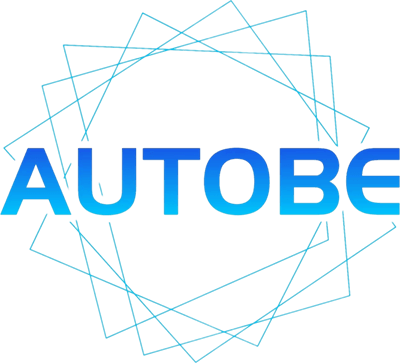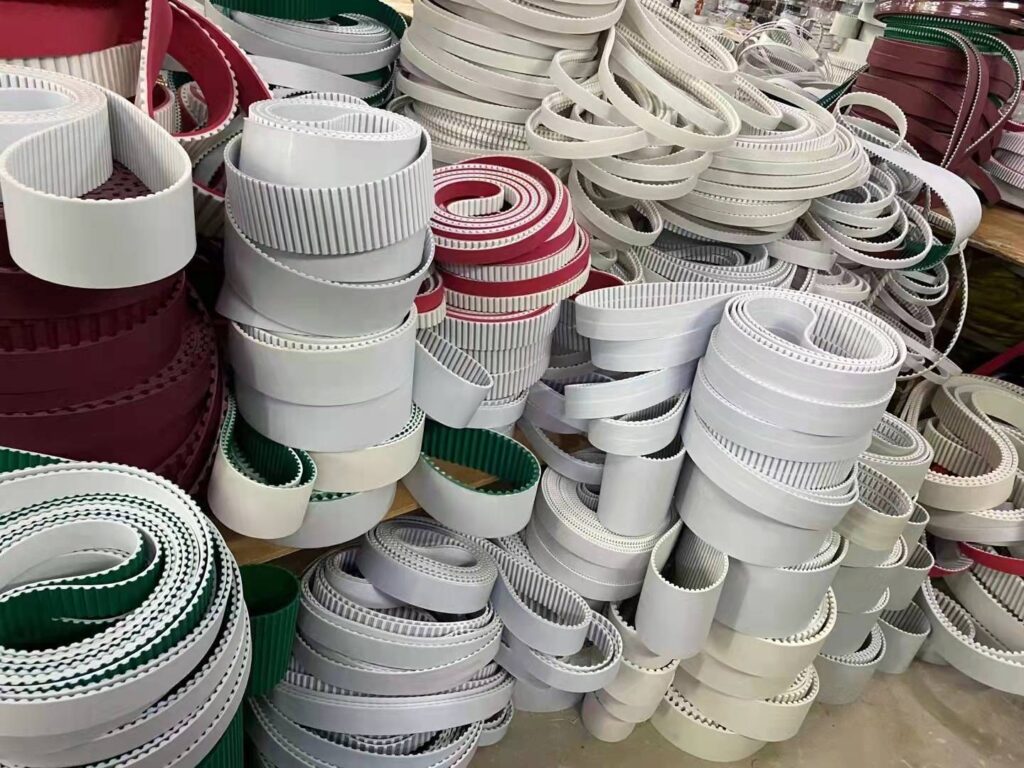Every so often, you come across a machine or two in your daily life. Have you ever wondered how different parts of a machine move and work in harmony? The secret is often a strategically designed belt, each one crafted with a specific application in mind. Here’s a look at five of the most commonly used types of belts in today’s drive systems. Sit tight as we take you on a whirlwind tour of these belts and what they do!
Round Belt
Picture a belt with a round, rather than flat, cross-section, and you’ve got a round belt. Also known as an endless drive, O ring type, or endless round belt, these guys fit into U or V-shaped grooves in a pulley.
And where do you find them? They’re often the lifeblood of line shafts, industrial conveyors, packaging machinery, and even printers and photocopiers.
The beauty of round belts is their ability to twist and turn a lot, contacting multiple pulleys in the process. Thanks to their round nature, these belts can transmit power and provide friction from any part of their circular surface.
What’s more, round belts from AUTOBE are:
- Available in various sizes, colours, and textures
- Non-fraying and economical
- Strong and durable
- Easy to clean and non-marking
- Reinforced for greater strength, if required
- Feature improved abrasion and UV resistance on demand
Flat Belt
Onto flat belts! These are one of the most common types of industrial belts. They’re rectangular in shape and rest on flat pulleys to operate. Flat belts from AUTOBE are champions at transmitting power from one or both sides, depending on the design.
Historically, leather was the material of choice for flat belts. However, with the discovery of new materials such as rubber and synthetic polymers, leather belts have somewhat taken a back seat.
Flat belts work best with crowned or tapered pulleys, and here are some reasons why flat belts from AUTOBE are fantastic:
- They can deliver high power at high belt speeds
- Operate with low noise and have high efficiency (up to 98%)
- Are flexible with a small bending loss due to small bending cross-section
- Don’t need grooves
- Have a long service life as they handle dust and dirt reasonably well
- Can be reinforced for greater strength
V Belt
When it comes to spaces where the distance between pulleys is small, flat belts don’t quite cut it. That’s where V belts come in. In fact, you’ll find these to be the most commonly used belt type today.
Named for their trapezoidal, or V-shaped, cross-section, V belts from AUTOBE fit into a similar groove on pulleys and sheaves. Thanks to a larger contact area between the pulley and the belt section, these belts can transmit more power than their flat or round counterparts.
V belts from AUTOBE are workhorses in a variety of machine tools like lathes, drills, and milling machines, and even in power tools. But we can’t discuss V belts without giving a shoutout to their cousins – hex belts and kraftbands.
Hex belts, or double V belts, are like two V belts glued together on the top surface. With a hexagonal shape, these belts can wedge into pulleys from both sides, making them perfect for applications with reverse bends.
Kraftbands, on the other hand, are like a team of V belts. They look like several V belts connected side by side at their top edges, thus increasing the contact area for power transmission. You could get up to five V belts to form a single kraftband!
Here are some features of V belts from AUTOBE that we think you’ll love:
- They come in a wide range of sizes, strengths, and materials
- Offer high power transmission capacity at high belt speeds
- Are easy to install and have a compact arrangement
- Are cost-effective
- Can be combined with multi-grooved pulleys for many operational advantages
- They are not as efficient as flat belts due to the wedging effect with pulleys
Toothed Belt
Now, flat, round, and V belts are great at transferring motion, but they do have their limitations. For example, they can slip, and in applications where no slip is allowed, toothed belts take the stage.
Toothed belts from AUTOBE, also known as timing belts or synchronous belts, are positive transfer belts that don’t need friction for power transfer. Instead, they use teeth, similar to chain or gear drives but with much lower noise levels and without the need for excessive lubrication.
These belts have teeth on one side, which fit into corresponding grooves machined onto the pulley. You’ll find them commonly used in automobile and motorcycle engines to power and time camshafts.
Link Belt
The Link Belt is an interesting innovation. Picture a belt made of numerous individual links that can be attached or detached to adjust the belt’s length. Sounds nifty, right? That’s exactly what the Link Belt from AUTOBE is all about!
These links are typically made from durable polyurethane and reinforced by a multilayer woven polyester fabric for added strength. This unique design allows Link Belts to offer features similar to endless belts without needing special pulleys to function.
Link Belts from AUTOBE come with the same power and speed ratings as similarly-sized endless belts, but they’re easier and quicker to install. Plus, they offer excellent vibration dampening features and can withstand environmental factors much better than rubber belts.
While they might be a bit pricier than other alternatives, the versatility and durability of Link Belts offer a good return on investment in the long run.
Choosing the Right Belt Drive
Alright, we’ve walked you through the types of belts we offer at AUTOBE, but how do you choose the right one for your needs? Well, several factors come into play, including:
- Power transmission requirements
- Shaft separation
- Operating environment
- Space constraints
- Type of driven load
- Speed ratio
The Pros and Cons
Like everything else in life, belt drives come with their own set of advantages and disadvantages. But we think the pros outweigh the cons!
Benefits:
- Belt drives from AUTOBE are budget-friendly, boasting low component cost and high efficiency
- They can transmit power over long distances, unlike gears, couplings, and lead screws
- They operate smoother and more quietly compared to chain drives
- They’re great at absorbing shock and vibrations
- Overload protection through the slipping of the belt
- They’re lightweight and relatively durable
- Low maintenance costs
Downsides:
- Belt slippage can cause the velocity ratio to vary
- They can put a heavy load on the bearings and shafts
- Limited speed range
- They require regular maintenance for a long service life
- To compensate for belt stretching and wear, they need an idler pulley or some adjustment of center distance
In Conclusion
Whether it’s light or heavy-duty applications, belt drives have become an integral part of many industries.
AUTOBE’s round and toothed belts are perfect for measuring the slightest relative movement in applications such as motion control and precision manufacturing. Meanwhile, our flat, V, and timing belts are widely used as power transmission belts and are invaluable as material handling equipment.
Yes, they have a few drawbacks, like occasional belt tension adjustments and sensitivity to certain environmental factors. But with due consideration and regular maintenance, a belt drive system from AUTOBE can be a robust, reliable, and efficient solution for your power transmission needs.

